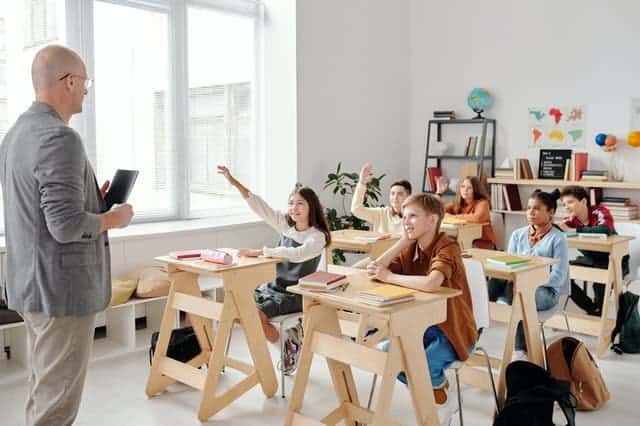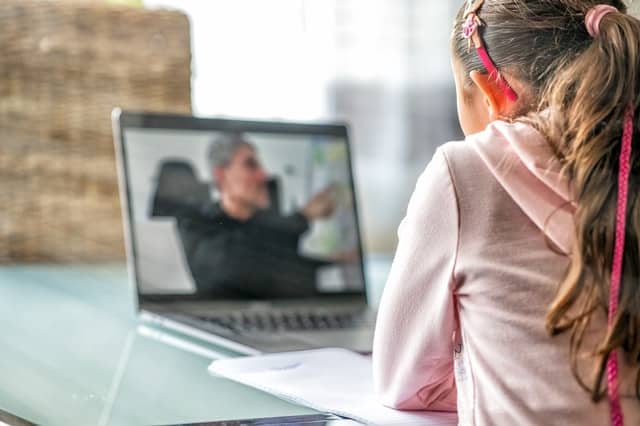Online learning shook up the way educators had to think about building community in the classroom. The effects of lockdowns and social distancing have created an aftershock that’s still present. Creating a sense of community and belonging has never been more important as students are more distanced than before the pandemic.
Building community in the classroom is vital because it allows students to form positive relationships and feel included. It also teaches them social skills and collaboration.
In this article, we’ll explore activities that help to build community in the classroom. We’ll also identify characteristics of successful community building to evaluate implementation.
How do you build community in the classroom

Building community in the classroom is more than assigning group work or teams. A community is created through sharing. Shared beliefs, shared values, shared ideas or attitudes all play a part. While classrooms are shared spaces, that doesn’t mean learners share the same ideals. When fostering community, it is important to encourage sharing, even when this leads to disagreement.
When utilizing small groups, sometimes it is best to let children choose their own groups to give them more autonomy. However, it is also important to assign groups on other occasions to get students interacting, who might not otherwise talk on the playground.
Community is about sharing but it’s also about compromise. This means that the best approach to building community is both fostering existing relationships and developing new ones. Use a balanced approach and keep it fresh.
Online learning and classroom community

Online learning can make it difficult to replicate the methods used in classrooms pre-pandemic. Missing from virtual learning is the opportunity for children to regularly converse in small groups, not only to learn but also to develop their social skills. While some teachers do their best to create small group opportunities, there are fewer of them, and interaction is often limited. Social interactions are sometimes limited to typing on a keyboard or “raising” a virtual hand. While teachers work to nurture discussion, some students are less responsive to the new medium.
When online learning is present, it’s important to utilize breakout rooms and create social games to give students a sense of connection. Icebreakers like human bingo, where children record a short video introduction, and students must match listed interests on a bingo board to a name, are a great way to promote classroom community. In this activity, students discuss answers through microphones and typed messages. Find more examples of virtual social learning activities, here.
Activities to build community in the classroom

There are methods for creating community in the classroom that can be used both offline and online. Here are core ideas to create classroom community activities:
- Create classroom goals and rules together. To promote teamwork and community, have students help create group goals and rules together. This creates a shared purpose.
- Encourage your classroom to discuss their ideas. Through sharing beliefs and values or even approaches and methods, children are able to understand more about each other. They can also figure out their own position within a team. This helps them to become more aware and mindful in general. It also helps to combat assumptions to enable children to learn, rather than make judgments.
- Develop social awareness. Children require knowledge about their peers. They need to understand that differences are common parts of life and can be celebrated. Use a range of tools such as stories relevant to younger people to give them reference points and something to identify with. Implement games that encourage children to discuss likenesses and differences. That’s Me is a game where the teacher makes a statement, such as “I have a brother” and the children who can relate, chime in and say “that’s me” if it applies to them. Implement social icebreakers regularly throughout the year, rather than restricting to the beginning of the year. More substantive interactions may occur when used more frequently.
- Develop emotional awareness. Children need to grasp their own feelings to manage them. This also helps them to understand others through empathy. Ask your class to get introspective with creative writing and role play. Using their own feelings and emotions, and collaborating or sharing this with others will develop their personal and social awareness. Playing “Feelings Charades” where a child demonstrates an emotion and students guess the emotion is one activity that promotes emotional awareness.
- Take inspiration from businesses. Businesses are always looking to improve their working communities through team-building exercises. These are fantastic opportunities to create a social learning environment. Adapt online team-building games and activities meant for business to the classroom.
How to identify characteristics of classroom community
Characteristics of classroom community can be identified in multiple ways. Look for these moments to confirm that a classroom has indeed become a community.
- Note whether classmates are answering questions for others. Not only does this take a bit of pressure off of you as a teacher, but it also demonstrates that kids are willing to share with one another.
- Take moments to discuss things beyond the curriculum. If children are sharing details about their personal lives it shows that they are comfortable with each other. It also helps them to build trust because they begin to understand their differences and build their empathy skills.
- Use self-reflection to measure how well activities are working. After working in a group, children can fill out a worksheet to detail what they have learned, how they have learned it, and also indicate areas of improvement. This helps you plan future sessions that incorporate community building activities.
- Identify leaders in the classroom. Children might not always be confident in taking charge. Assigning a group leader, especially ones that wouldn’t normally occupy this position, gives them the opportunity to develop leadership skills and show that they are willing to engage. It also prevents children from being excluded when more confident kids automatically fill these roles. It’s a balancing act where you may reward natural leaders but also persuade others to take on the challenge.
About Us
These are just a few ways to build community in the classroom and evaluate the results. Soul Shoppe provides professional development for teachers online with social emotional learning opportunities for students. See how our online courses can help.
You May Also Like:
Effects of Social Isolation on Children
Sources: Facinghistory.org, Study.com, Wired.com, Edutopia, Study.com, NYTimes, Columbia.edu

